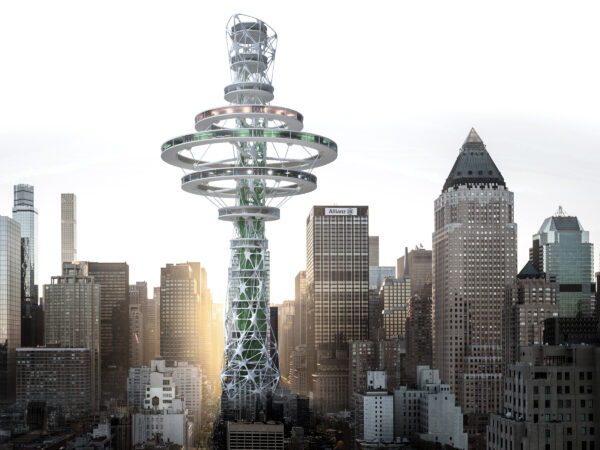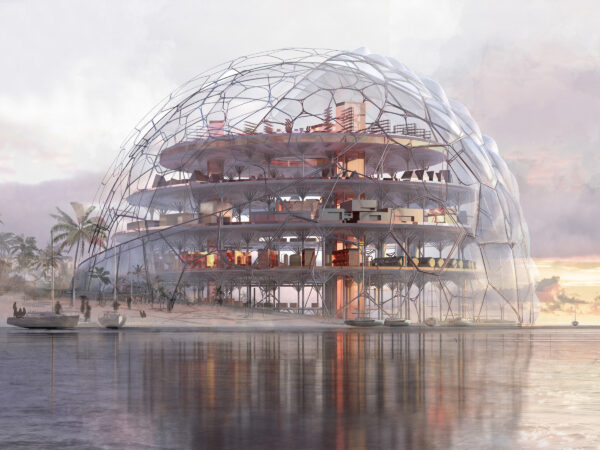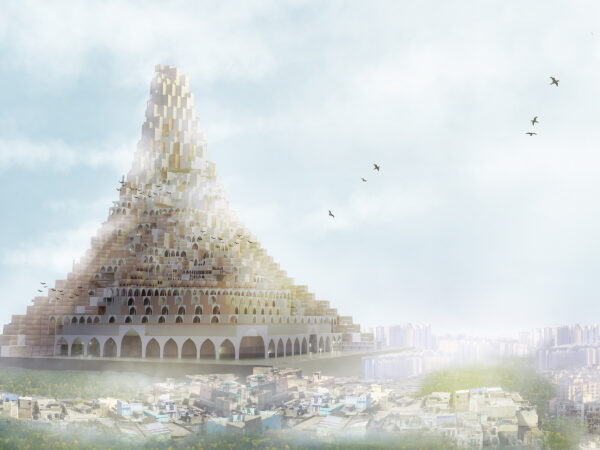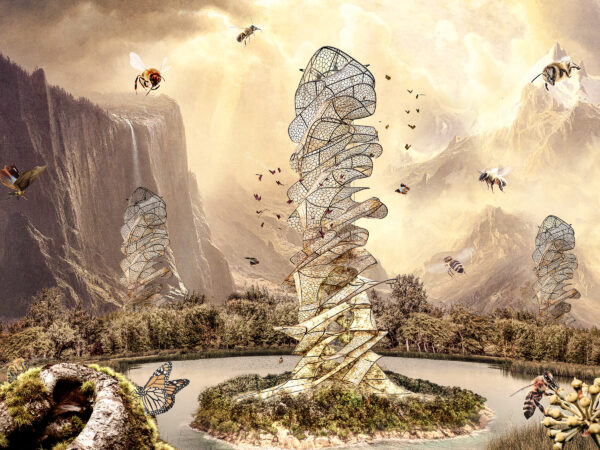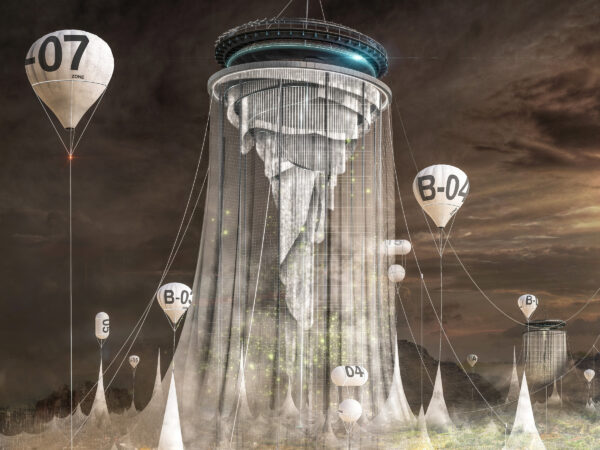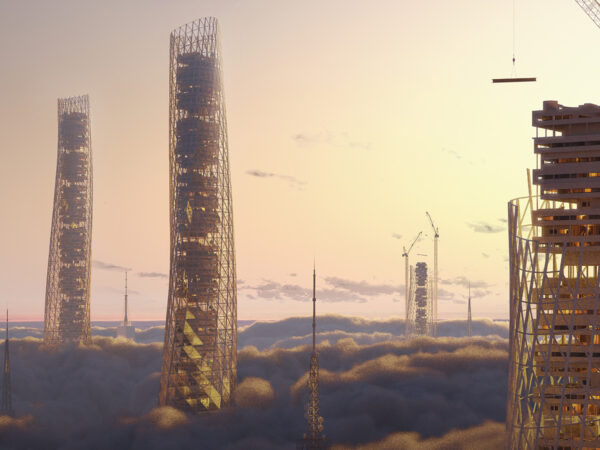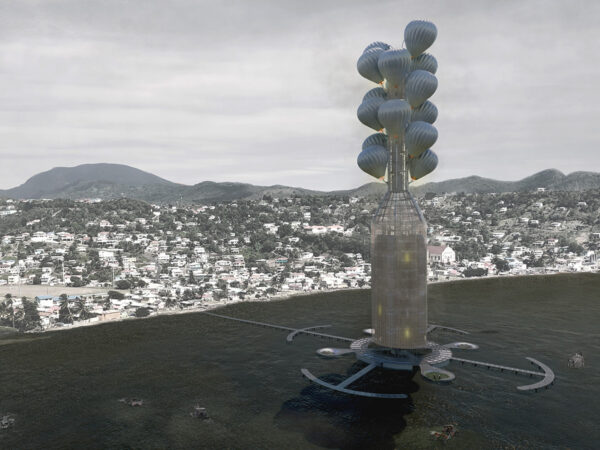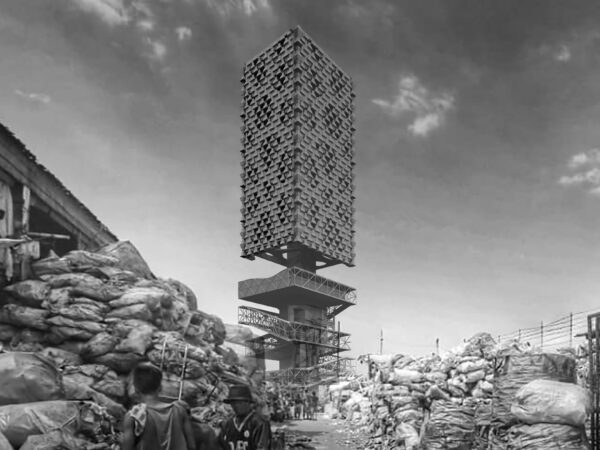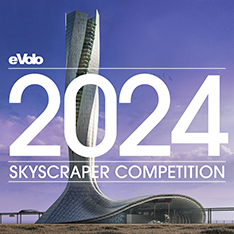2021 Skyscraper Competition
Editors’ Choice
Camille Rabany
United States
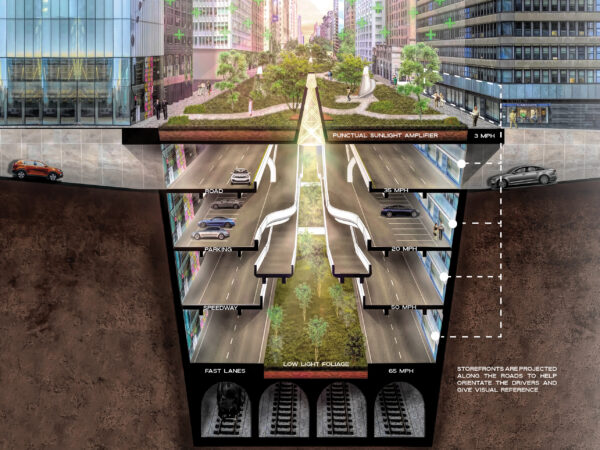
A skyscraper is a testament to the human capacity to physically manifest our values. With this in mind, the Invisible Skyscraper aims to offset the carbon emissions of the cars driving along park ave with the creation of a carbon-absorbing park. It will accomplish this by placing vehicular circulation below ground to make way for a carbon-absorbing park on the street level. By placing the roads underground, a hierarchy can be implemented with different speeds and greatly improve traffic.
The average car emits 411 grams of C02 per mile. The average tree absorbs 48 pounds of co2 per year. This implies that, in a single minute, one tree can absorb approximately 0.5 grams of C02. The total footprint of the invisible skyscraper stretches from park avenue down to the Manhattan bridge. it is 7.8 miles long. Along with said footprint, there is the potential to plant 41,200 trees, each absorbing 0.5 grams of c02 per minute. This would create an offset of 20,600 grams of co2.
Taking the average car emission into account along the 7.8 miles, this would accrue to 3205 grams of potential c02 emissions at any one moment during a bumper-to-bumper traffic jam. Park Avenue has six lanes, so the total potential emission equals 19234 grams of C02.
Having the roads below ground will, in turn, reduce the numerous other pollutants of cars. The pedestrian senses will be freed of noise, odor, visual strain, physical danger, not to mention the taste of gasoline in the air.
Replacing each of these with the positive attributes of a park; the song of birds, the smell of flowers, the calming effect of greenery, etc… Moreover, it will bring the streetscape back to a human scale, a pedestrian speed. Slowing down the physical and visual references could, in turn, reduce anxiety.
The benefits of this carbon-neutral solution would have a positive impact that reaches all the way to the sky. Thus, it is the invisible volume, free of pollution, infused with the positive attributes of a park, that defines the skyscrapers’ reach. Creating an invisible field of positive energy. Reclaiming the street for pedestrians, reducing pollution, creating environments we want to live in, all the while solving traffic issues. Read the rest of this entry »

